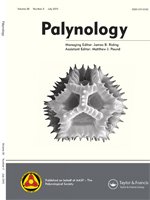Leafhoppers are efficient vectors of plant pathogens, but their diversity during the off season in perennial grasses bordering harvested fields of maize has not been studied. The objective of this study was to document the diversity of leafhoppers on grasses that grow during the winter dry season when harvested fields of maize, Zea mays L. ssp. mays, are fallow. Green perennial grasses at Jalisco, Mexico, were sampled with a sweep net every 2 weeks from November 2012 through June 2013. The Shannon-Wiener index showed a diversity of H´= 1.86 and the Pielou index showed a lack of evenness (J´= 0.58) in abundance of all species. In total, 25 taxa from 22 genera were collected, identified, and illustrated. The subfamily Deltocephalinae was most abundant and diverse, with 17 taxa in 14 genera. Greatest species diversity was found during the first 4 months of the winter dry season. The Deltocephalinae Stirellus bicolor, Graminella sonora, and Dalbulus elimatus were most abundant and found throughout the winter.
How to translate text using browser tools
1 June 2015
Diversity of Leafhoppers during the Winter Dry Season on Perennial Grasses Bordering Harvested Fields of Maize
Jorge Adilson Pinedo-Escatel,
Gustavo Moya-Raygoza
ACCESS THE FULL ARTICLE

Southwestern Entomologist
Vol. 40 • No. 2
June 2015
Vol. 40 • No. 2
June 2015




